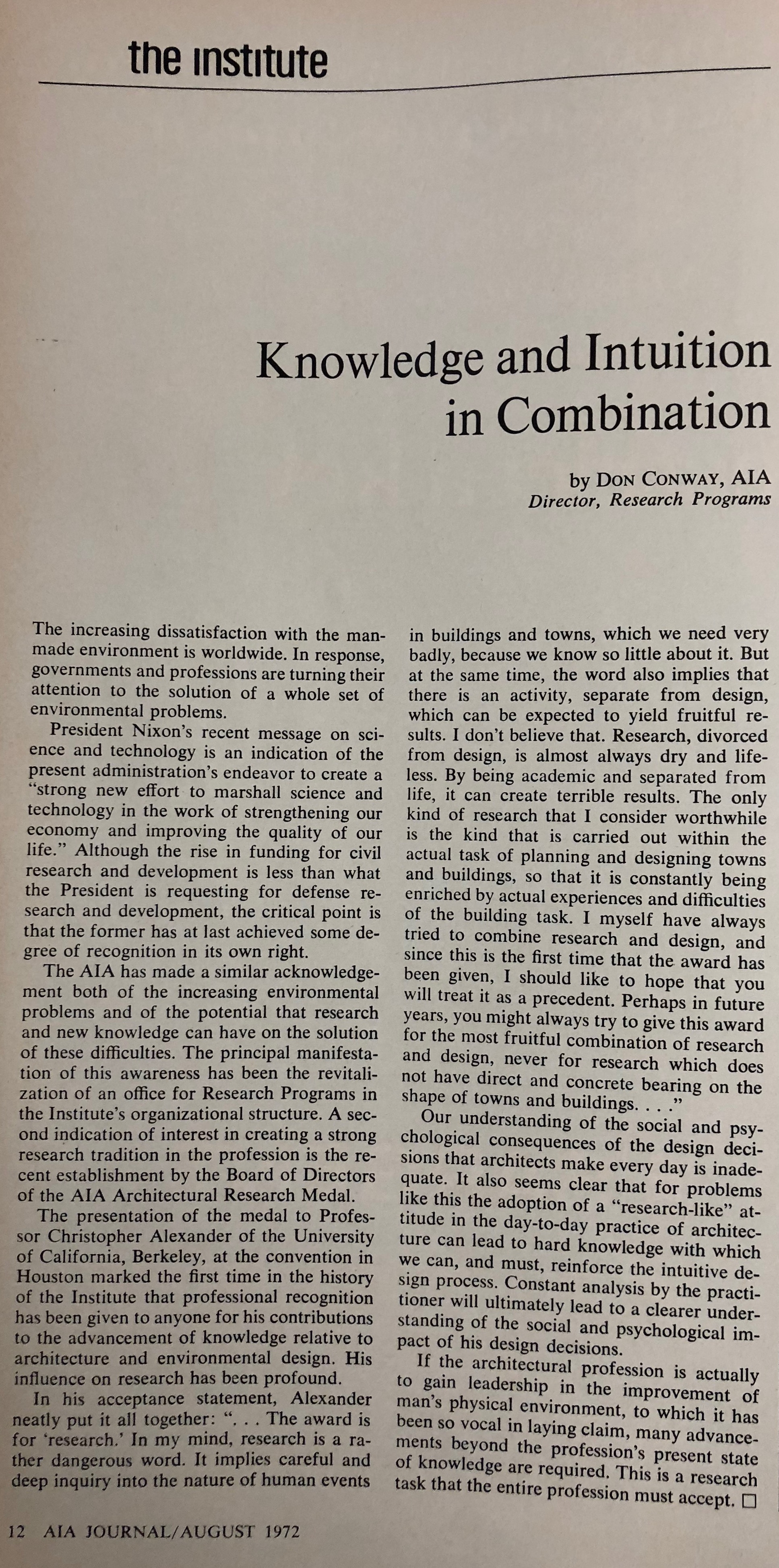
the institute
---------------
Knowledge and Intuition in Combination
by DON CONWAY, AIA Director, Research Programs
The increasing dissatisfaction with the man-made environment is worldwide. In response, governments and professions are turning their attention to the solution of a whole set of environmental problems.
President Nixon's recent message on science and technology is an indication of the present administration's endeavor to create a "strong new effort to marshall science and technology in the work of strengthening our economy and improving the quality of our life.” Although the rise in funding for civil research and development is less than what the President is requesting for defense research and development, the critical point is that the former has at last achieved some degree of recognition in its own right.
The AIA has made a similar acknowledgement both of the increasing environmental problems and of the potential that research and new knowledge can have on the solution of these difficulties. The principal manifestation of this awareness has been the revitalization of an office for Research Programs in the Institute's organizational structure. A second indication of interest in creating a strong research tradition in the profession is the recent establishment by the Board of Directors of the AIA Architectural Research Medal.
The presentation of the medal to Professor Christopher Alexander of the University of Berkeley, at the convention in Houston marked the first time in the history of the Institute that professional recognition has been given to anyone for his contributions to the advancement of knowledge relative to architecture and environmental design. His influence on research has been profound.
In his acceptance statement, Alexander neatly put it all together: "... The award is for research.' In my mind, research is a rather dangerous word. Itimplies careful and deep inquiry into the nature of human events in buildings and towns, which we need very badly, because we know so little about it. But at the same time, the word also implies that there is an activity, separate from design, which can be expected to yield fruitful results. I don't believe that. Research, divorced from design, is almost always dry and lifeless. By being academic and separated from life, it can create terrible results. The only kind of research that I consider worthwhile is the kind that is carried out within the actual task of planning and designing towns and buildings, so that it is constantly being enriched by actual experiences and difficulties of the building task. I myself have always tried to combine research and design, and since this is the first time that the award has been given, I should like to hope that you will treat it as a precedent. Perhaps in future years, you might always try to give this award for the most fruitful combination of research and design, never for research which does not have direct and concrete bearing on the shape of towns and buildings....”
Our understanding of the social and psychological consequences of the design decisions that architects make every day is inadequate. It also seems clear that for problems like this the adoption of a "research-like" attitude in the day-to-day practice of architecture can lead to hard knowledge with which we can, and must, reinforce the intuitive design process. Constant analysis by the practitioner will ultimately lead to a clearer understanding of the social and psychological impact of his design decisions.
If the architectural profession is actually to gain leadership in the improvement of man's physical environment, to which it has been so vocal in laying claim, many advancements beyond the profession's present state of knowledge are required. This is a research task that the entire profession must accept.
12 AIA JOURNAL/AUGUST 1972